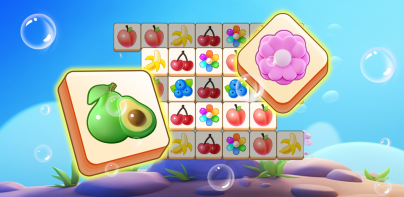



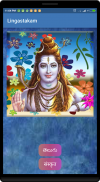
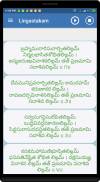

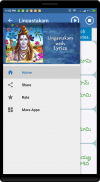
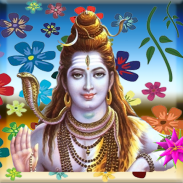
Lingastakam

وصف لـLingastakam
A short introduction
Lingashtakam is a hymn in praise of Sri Siva, also called Maheswara, Rudra, Pasupati etc. The Linga is a symbol for Siva, just like Sankha and Chakra are symbolic of Sri Vishnu. Linga also means the gender of a being. We have Stree Linga (Female gender), Pumlinga (Male Gender) and Napumsaka Linga (literally non-male Gender, but meaning neutral gender). Linga has also become over the ages, a symbol of manliness, the erect phallus, and it is appropriate since He is the Adi Purusha. While Para Brahma is considered to be Nirguna, i.e. without any discernible attributes, once He/She/It decides to manifest in Saguna form (for reasons beyond our intelligence), we have Purusha (male) and Prakriti (Nature, considered to be feminine). And we have the Trinity (the creating, preserving and destroying aspects) of Devas and Devis, Brahma, Vishnu and Siva in the male aspects and Saraswati, Lakshmi and Parvati in their female aspects, their consorts.
مقدمة قصيرة
Lingashtakam هو ترنيمه في مدح سيفا لانكا، وتسمى أيضا Maheswara، رودرا، Pasupati وما إلى ذلك. نجة هو رمز للسيفا، تماما مثل Sankha وشقرا هي رمزية من فيشنو لانكا. يعني نجة أيضا جنس كائن. لدينا [ستر] نجة (أنثى بين الجنسين)، Pumlinga (ذكر الجنس) وNapumsaka نجة (حرفيا غير الذكور الجنس، ولكن هذا يعني محايد بين الجنسين). أصبح نجة أيضا على مر العصور، رمزا للرجولة، والقضيب المنتصب، وأنه من المناسب منذ وهو عدي Purusha. في حين يعتبر بارا براهما أن يكون Nirguna، أي من دون سمات أي مميزا، مرة واحدة انه / انها / انه تقرر تظهر في شكل Saguna (لأسباب خارجة عن مخابراتنا)، لدينا Purusha (الذكور) وPrakriti (الطبيعة، تعتبر المؤنث ). ولدينا الثالوث (وخلق وحفظ وتدمير الجوانب) من ديفاس ودفيس، براهما، فيشنو وسيفا في الجوانب الذكور وساراسواتي، لاكشمي، وبارفاتي في جوانب من الإناث، رفيقات لها.




